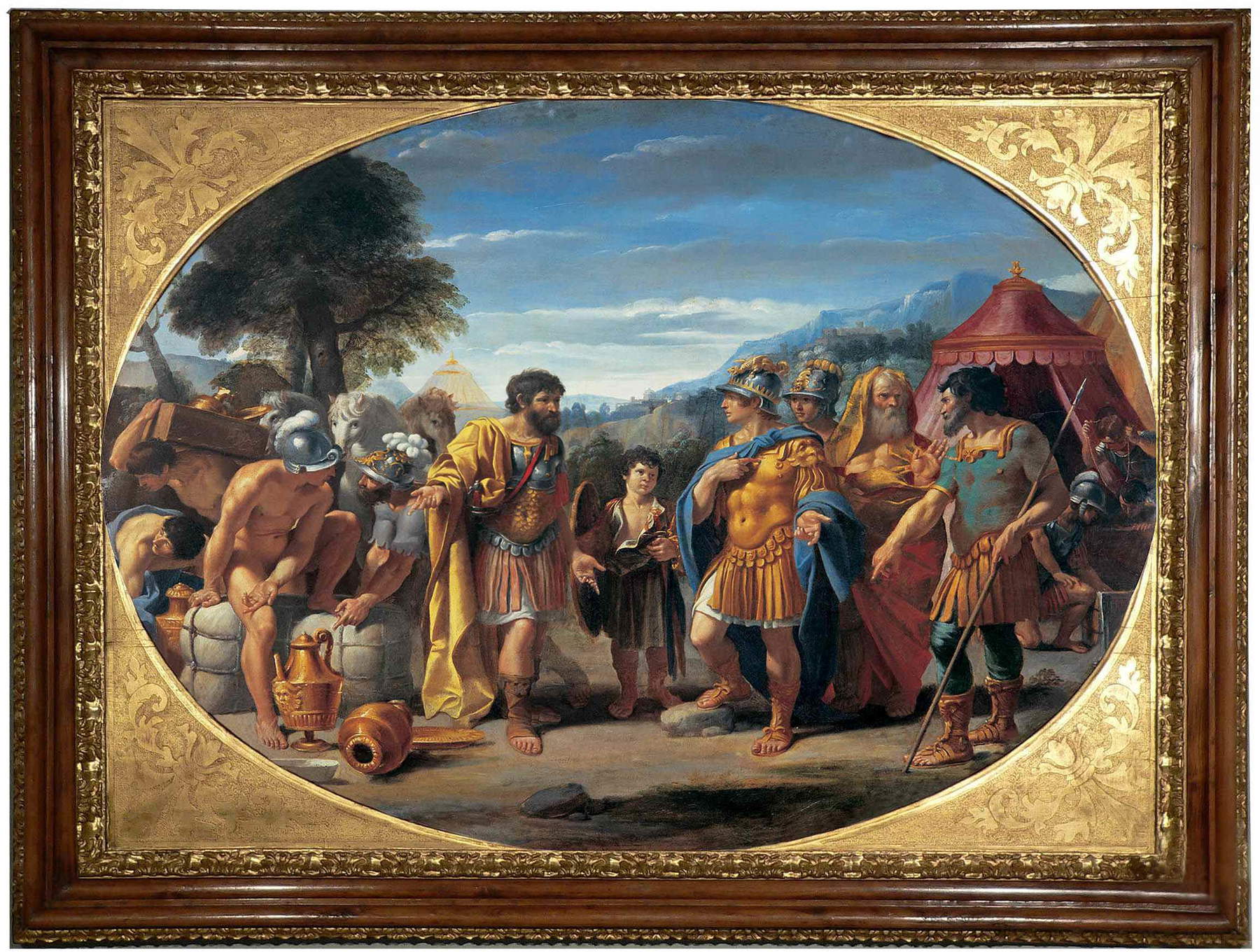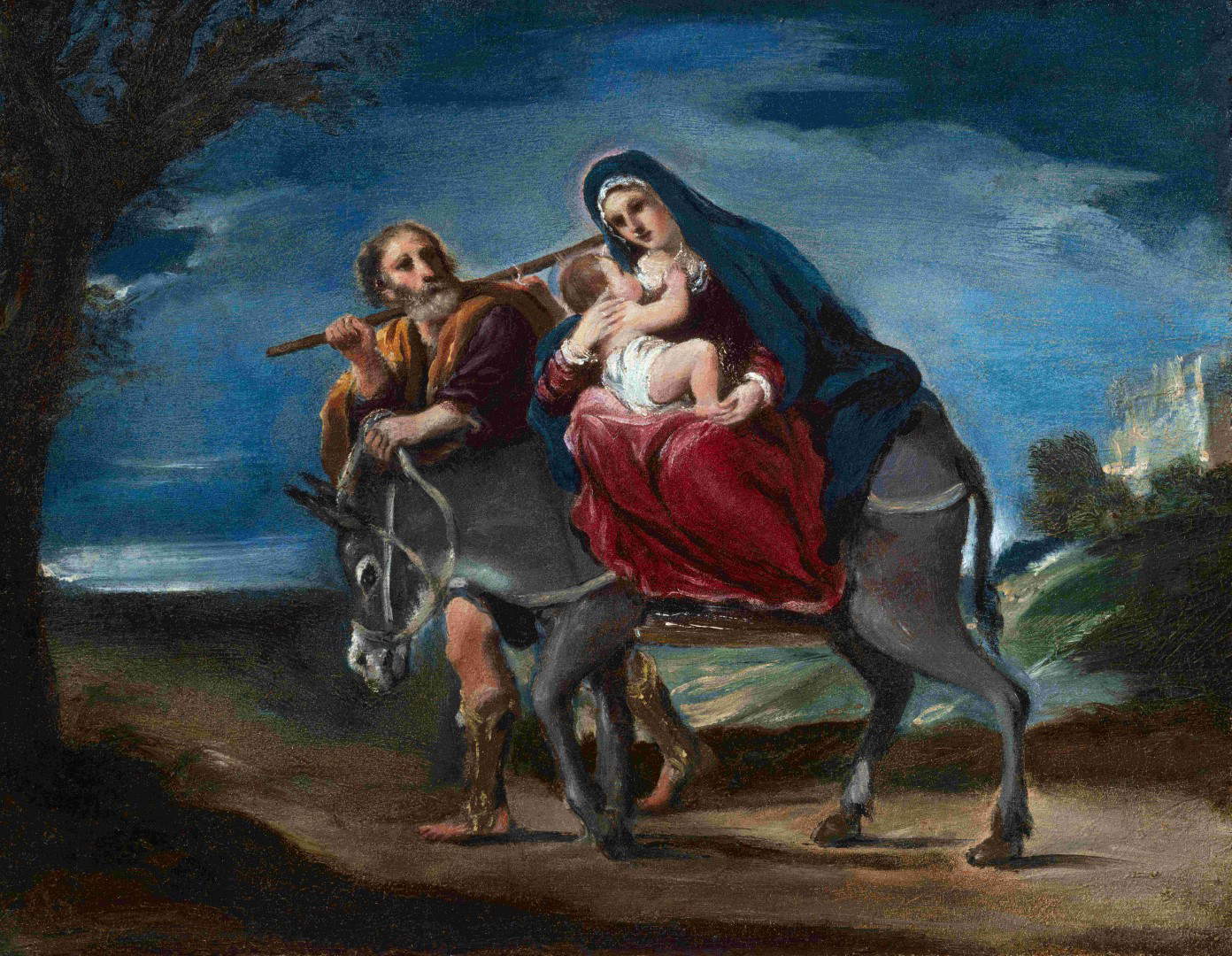Tiziana Sassoli ’s Fondantico Gallery will be among the exhibitors at the second edition of Art and Collecting in Rome, scheduled for September 18-23, 2025 at Palazzo Barberini, home of the National Galleries of Ancient Art. The Bologna-based gallery’s booth will offer a selection of paintings of great historical and artistic interest, with an itinerary that spans two centuries of painting from Emilia, an area on which Fondantico’s work has always focused, from the early seventeenth century to its nineteenth-century achievements.
The centerpiece of the exhibition will be a precious early tablet by Giovanni Francesco Barbieri, known as Guercino (Cento, 1591 - Bologna, 1666), depicting the Flight into Egypt. Datable around 1615, the work already shows the early originality of the Cento painter, who places the holy family in a wide landscape, the real protagonist of the scene, animated by a deep and wide-ranging view. Next to Guercino, a rare copper by Francesco Cavazzoni (Bologna, 1559 - 1612), an artist best known as a historiographer, but also the author of small paintings inspired by 16th-century engravings, will be on view. In this case, the subject is Albrecht Dürer’sCoronation of the Virgin, reworked with pictorial sensibility that testifies to the circulation of Nordic models in early 17th-century Italy.
Also of historical importance is the painting by Sisto Badalocchio (Parma, 1585 - 1647) with Alexander and Taxiles, part of a series of eleven ovals with episodes from the Stories of Alexander the Great commissioned by Cardinal Alessandro Peretti Montalto between 1614 and 1616. The series was located in the Great Hall of the palace at the Baths on the Esquiline, which was destroyed in 1883 to make way for Roma Termini station. The works, entrusted to some of the leading painters active in Rome in those years, remain a fundamental testimony to artistic taste and commissions in Baroque Urbe.
Among the protagonists of the same enterprise was Giovanni Lanfranco (Parma, 1582 - Rome, 1647), whose large canvas with Sleeping Venus with Cupid and a Cupid, made around 1618-1620, Fondantico presents. The work, which combines compositional refinement and explicit sensuality, was recently shown at the exhibition Guercino. The Ludovisi Era in Rome at the Scuderie del Quirinale, confirming its centrality in the production of the Parma master, who was active in Rome alongside the Carracci.
A milestone of the exhibition itinerary is the Flagellation of Christ by Domenico Maria Canuti (Bologna, 1625 - 1684), datable to around 1665. A painter among the protagonists of the great Baroque decoration between Bologna and Rome, Canuti was an academician of San Luca and the author of monumental frescoes in Palazzo Altieri and the church of Saints Domenico and Sisto. In this room painting emerges the scenographic and dramatic force of his painting, in which Carlo Volpe identified a “vivid Rubensian cue,” a sign of the international openness of the Emilian school.


The itinerary continues in the middle of the 18th century with two works by Gaetano Gandolfi (San Matteo della Decima, 1734 - Bologna, 1802), a central figure of Bolognese painting in the second half of the 18th century. The first painting, unpublished, depicts the myth of Semele, who pregnant with Jupiter falls victim to Juno’s deception and dies incinerated after asking her lover to show herself in all her divine power. The theatricality of the scene, datable to around 1790, testifies to Gandolfi’s ability to blend mythological drama and scenic sensibility. The other painting, also from the same years, depicts The Argonauts and was presented at the famous Exhibition of the Eighteenth Century in Bologna in 1935, which marked a fundamental moment in the critical rediscovery of Emilian art.
The selection proposed by Fondantico is not limited to Old Masters, but also opens up to the 19th century, thanks to the research work of Edoardo Battistini. By the Ferrara-born Giovanni Boldini (Ferrara, 1842 - Paris, 1931), destined to become the celebrated portrait painter of the Belle Époque, a small oil on cardboard depicting probably his mother, Benvenuta Caleffi, is exhibited. This is a youthful work, made between 1866 and 1868, before his move to Paris, and documents the freshness and sensitivity of the young painter.
By the Neapolitan Giovanni Ponticelli (Naples, 1829 - 1880), an artist also known for making theater curtains, on the other hand, a large painting from 1871 is presented, depicting young women dancing during a villa party, immersed in a bright and festive atmosphere, evidence of his taste for scenes of popular and mundane life.
A work by Milanese painter Sofia Grancini, trained at the Brera Academy and active in the last quarter of the 19th century, closes the itinerary. The canvas with Smoking Odalisque tackles a subject dear to Orientalist painting, reinterpreting it with a personal sensibility that makes her a rare and interesting figure in the female art scene of the time.
Fondantico’s participation in Arte e Collezionismo in Rome confirms the vocation of Tiziana Sassoli’s gallery to research and enhance works that combine historical importance, pictorial quality and collecting relevance. In a path that spans three centuries of Italian art, from Baroque splendor to 19th-century experimentation, the public will have the opportunity to admire masterpieces and rarities that testify to the vitality of the Emilian school and its ability to dialogue with the broader national and European scene.
The appointment is from September 18 to 23, 2025 at Palazzo Barberini, Fondantico booth, for an itinerary that restores in a single occasion the charm of works that are rarely found together and that offer a valuable cross-section of Italian art history.


 |
| From Guercino to Boldini: Fondantico brings two centuries of Emilian art to Rome |
Warning: the translation into English of the original Italian article was created using automatic tools. We undertake to review all articles, but we do not guarantee the total absence of inaccuracies in the translation due to the program. You can find the original by clicking on the ITA button. If you find any mistake,please contact us.